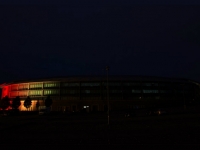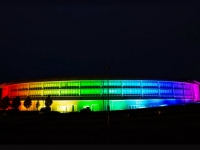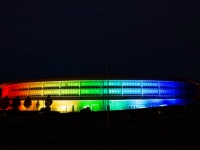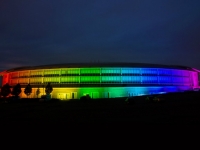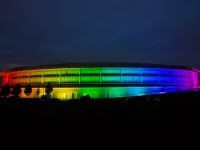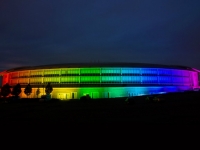News
International Day Against Homophobia, Transphobia and Biphobia (IDAHOT)
GCHQ celebrate IDAHOT day with pride
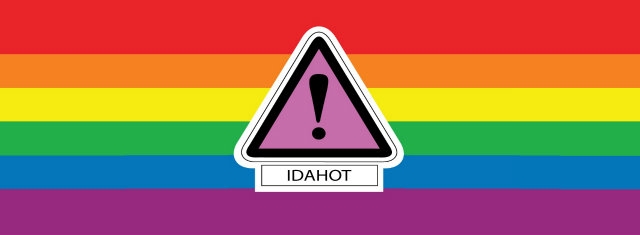
International Day Against Homophobia, Biphobia and (Source: dayagainsthomophobia.org)
USPA NEWS -
The International Day Against Homophobia & Transphobia (IDAHOT), has been held annually on May 17th since 2005 and is today the world´s largest LGBTI solidarity practice. Actions take place every year in more than 120 countries.
GCHQ will today be lit up with a rainbow to mark International Day Against Homophobia, Transphobia and Biphobia (IDAHOT). The intelligence agency is projecting a spectrum of colours onto the outside of its iconic building in Cheltenham as a symbol of its commitment to diversity. For GCHQ, illuminating the building in rainbow colours is a public statement about its pride in its diverse workforce, and is testament to how far the organisation has come. Until the early 1990s, being openly gay was a bar to employment at GCHQ. Attitudes in society and GCHQ have since changed; now diversity is not merely accepted at GCHQ, but is actively promoted in its workforce.
At Bletchley Park during the Second World War, Alan Turing´s efforts helped keep Britain safe, but he had to keep his sexuality a secret. The legacy of Bletchley Park lives on in GCHQ, but today it values the talent of its diverse workforce and fosters a culture of acceptance. Sir John Dermot Turing, the nephew of Alan Turing, spoke about what the gesture means to him. He said: “I am delighted to see GCHQ celebrating its commitment to diversity by lighting its building in the rainbow colours. My uncle, Alan Turing, made a crucial contribution to the safety of the nation when he worked for GCHQ´s forerunner Bletchley Park but due to society´s attitude at that time he was forced to hide his sexuality.
It is important that his successors at GCHQ today are free to be themselves, and therefore bring their talents to such vital work.“
Today´s GCHQ is a modern intelligence and security organisation that continues to keep Britain safe. These days its workforce reflects the diversity of the nation they serve. GCHQ supports all staff to free their potential and share their skills and viewpoint, regardless of their age, gender, sexuality or race. The organisation is proud to be one that recognises the strength of its diverse workforce and does not tolerate discrimination in any form.
Today´s GCHQ is a modern intelligence and security organisation that continues to keep Britain safe. These days its workforce reflects the diversity of the nation they serve. GCHQ supports all staff to free their potential and share their skills and viewpoint, regardless of their age, gender, sexuality or race. The organisation is proud to be one that recognises the strength of its diverse workforce and does not tolerate discrimination in any form.
Robert Hannigan, Director GCHQ, said: “World-leading innovation in technology absolutely requires diversity. That was true for GCHQ when Alan Turing tackled Enigma for us and it is just as true today. I´m proud of our diverse and creative workforce.“ Since 1996, GCHQ´s Pride network has been actively promoting LGBT (Lesbian, Gay, Bisexual and Transgender) issues. GCHQ was ahead of the curve, putting in place anti-discrimination policies before they were legislated for in 2003. The organisation supports initiatives such as the recently piloted programme of LGBT workshops for managers, which aims to make staff more confident at discussing related issues.
Paul, a GCHQ Pride member, said: “It´s great to work in a modern organisation that values people for their talent. I love that I can be myself at GCHQ and work in an environment where the Alan Turings of today can unleash their full potential. I know our Pride network fully supports this event; it sends a strong message that we uphold the values of the society that we preserve and protect. “I see what´s going on in the world and it really drives me; those who would do us harm do not share Britain´s values. I can think of a number of intelligence agencies around the world that probably won´t be marking IDAHOT.“
Click on link below for more information.
Click on link below for more information.
more information: https://www.dayagainsthomophobia.org
Liability for this article lies with the author, who also holds the copyright. Editorial content from USPA may be quoted on other websites as long as the quote comprises no more than 5% of the entire text, is marked as such and the source is named (via hyperlink).

